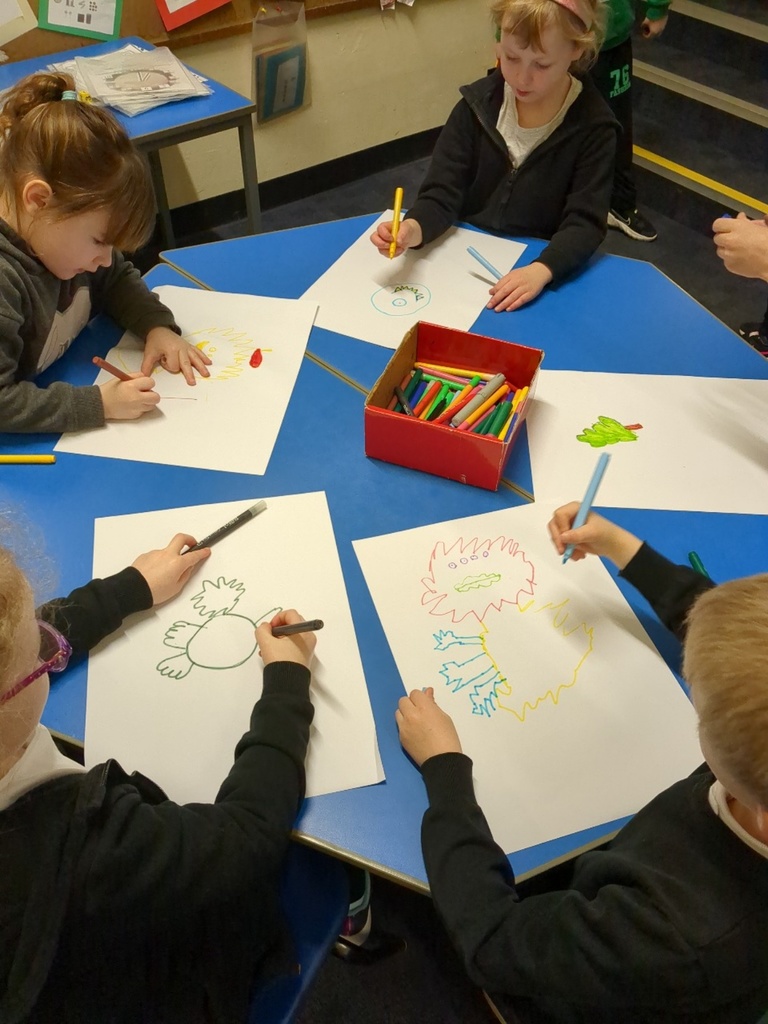Good afternoon,
This week the Primary one children have been introduced to the concept of time. They were also introduced to the different types of clock you get and what they look like. Then they took a closer look at an analogue clock. The children learned about how the numbers were set out on the clock and what the hands were for. They were then introduced to o'clock times. They have had opportunities to build their own analogue clock, play with show me o'clock fans, play o'clock bingo and complete worksheets where they had to match the o'clock time to the time shown on an analogue clock.
The P2 children have been working on take away within twenty. They have been shown how they can use their knowledge of take away within ten to help them solve some take away sums within twenty.
We have been learning some Scots words this week as part of our project work around Robert Burns. We have followed simple instructions in Scots and have sung the song 'Heids, Shooders, Naps and Taes.' It's been great fun. The children have also been introduced to their poems and the meaning of the Scots words within them. They have had an opportunity to practise saying the poems too. I can't wait to hear each child performing the full poem on the 25th January.
Writing this week linked with our work on the Scot's language. The children created their own monster and then labelled parts of the monster using Scot's words from a picture wordbank. Next week, they will use this labelled monster to write a description of their monster using whole sentences. The primary one children will be encouraged to use the sounds they know in their writing and some of their words from their picture.
In ICT the children got the opportunity to play Scots vocabulary games found on the Scotslanguage.com website. This has been set for homework this term. Some of the games can be played independently because instructions and words are read aloud for the children to hear. Others may need the support of an adult.
On Friday, the children developed their understanding of the properties of materials. They had to choose the best material to use as a shelter. They looked at four different materials and predicted whether the materials would keep the water from soaking through. They had to decide if the material would be waterproof. They then tested each material by securing each one over a cup using an elastic band. They then poured equal amounts of water over each one and looked to see if the water was kept out of the cup or if it poured through. Once we had learned which materials were waterproof we then discussed which would be best to use as a shelter. The children had to think about not just the waterproof properties but whether the material would be strong and flexible enough.
Can I please remind you to label all your children's clothes either using a name sticker, stamp or with pen. I try my best to pair up discarded jumpers, trousers, gloves, packed lunches,etc with their owners. However, there are lots of belongings that do not get claimed and end up in lost property. Thank you.
Have a great weekend. Kind regards, Mrs Thomson and Mrs Greig
P1/2 HIghlights
